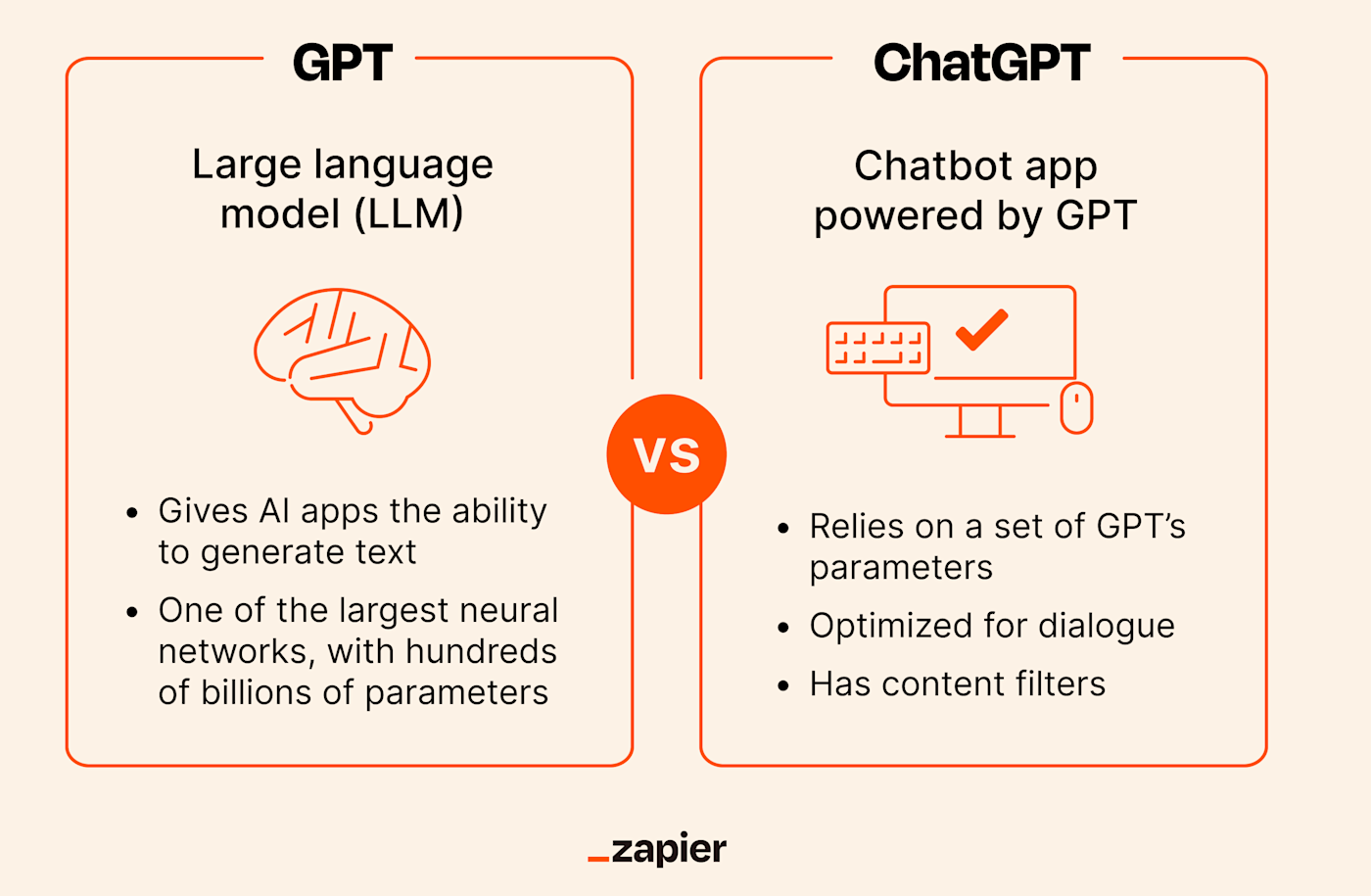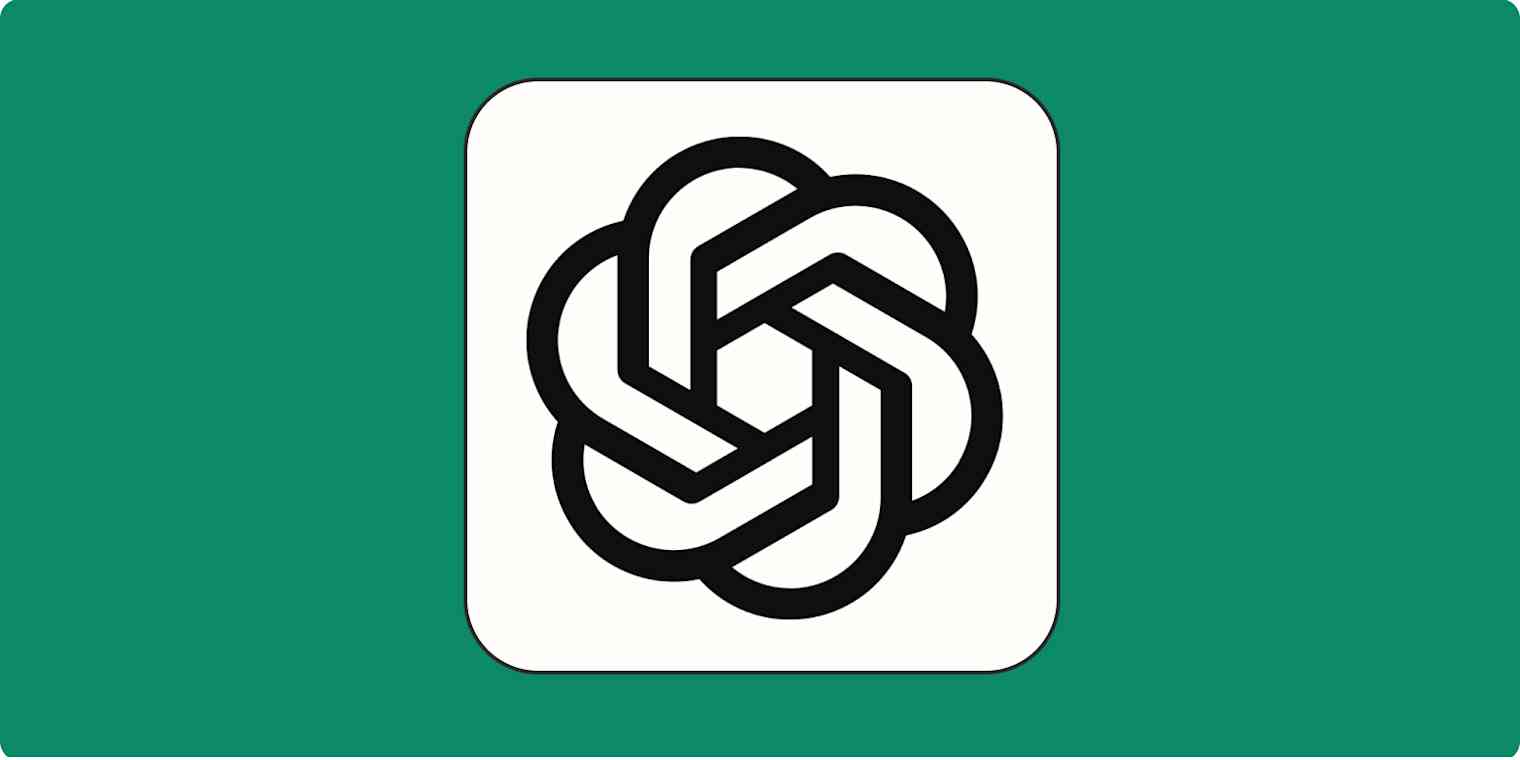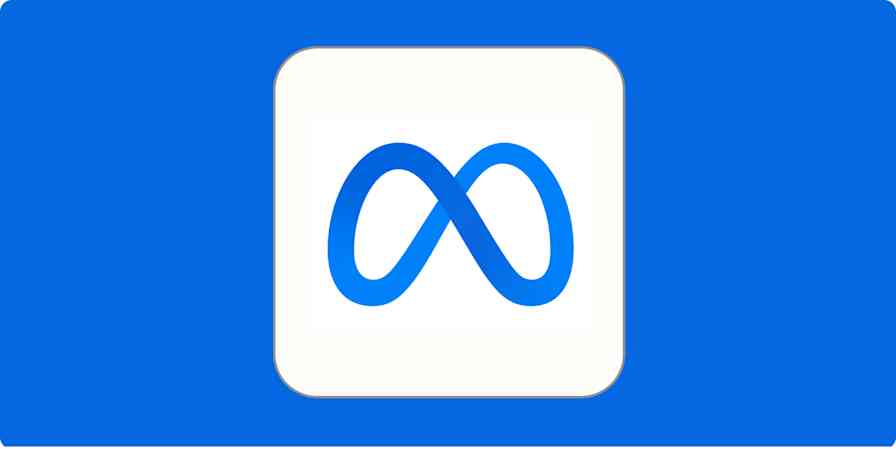There are two kinds of ChatGPT enthusiasts: those who've lifted the hood and attempted to parse the ludicrously mysterious inner workings of artificial intelligence, and those content to reap the benefits without giving themselves a headache. I fell into the latter camp, which led me to keep referring to ChatGPT as GPT-3 (and vice versa).
As it turns out, they're not the same thing—at all. Referring to ChatGPT as GPT-3 (or GPT-4, the newer and more powerful version) is like calling a Dell computer an Intel, the processor that powers it. And while Dell relies on Intel, Intel can power other computers, too.
Once I figured out the difference, I started noticing I wasn't the only person making this mistake. So I'm paying it forward: read on for the difference between GPT and ChatGPT.
What's the difference between ChatGPT and GPT?

While both ChatGPT and GPT-3/GPT-4 were built by the same research company, OpenAI, there's a key distinction:
GPT-3 and GPT-4 are large language models trained on terabytes of internet data that give artificial intelligence (AI) applications the ability to generate text. They're some the largest neural networks (modeled after the human brain) available: GPT-3 has 175 billion parameters that allow it to take an input and churn out text that best matches your request—and GPT-4 likely has way more.
ChatGPT is an AI chatbot that uses GPT's language model to interact with humans in a conversational way. It's optimized for dialogue by human trainers and the free version relies on 20 billion of GPT-3's parameters to produce convincing textual responses. OpenAI has also added content filters to stop it from going off the rails.
Revisiting the analogy above: if we think of ChatGPT as a Dell computer, then GPT is the Intel processor that powers it. After all, different computers can run on Intel processors in much the same way other AI applications can run on GPT-3 or GPT-4.
ChatGPT is an app; GPT is the brain behind that app
ChatGPT is a web app (you can access it in your browser) designed specifically for chatbot applications—and optimized for dialogue. It relies on GPT to produce text, like explaining code or writing poems.
GPT, on the other hand, is a language model, not an app. (There is an OpenAI playground that lets you play around with GPT, but GPT itself isn't an app.) It can be tailored to build different functions, like text summarizing, copywriting, parsing text, and translating languages. And it has an open API that lets anyone tap into GPT-3 or GPT-4 to build their own AI applications with its functions. It's the brain behind ChatGPT, yes, but it's also the brain behind other tools like Jasper and Writesonic, or Bing's new AI-powered search features.
GPT-3 is the industry standard for language models right now, just like ChatGPT is the industry standard for AI chatbots—and GPT-4 will likely be the standard soon. (Though Google is currently playing catch up with its newly launched chatbot, Bard, using a different language model called LaMDA.)
What does this mean for integrations?
Even though GPT is a language model and ChatGPT is a chatbot, they each have their own open API, which lets other apps connect to them. With Zapier, you can connect OpenAI or ChatGPT to thousands of other apps to automate workflows.
For example, you can get AI to write a business email from scratch—then automatically save it as a Gmail draft. Or it can score your leads based on their willingness to commit—then notify your sales team.
Create email copy with OpenAI from new Gmail emails and save as drafts in Gmail
Analyze new Typeform entries with OpenAI and send to a Google Sheet
Send OpenAI prompts via sendSMS messages with new emails in Gmail
Create email copy in OpenAI from new Woodpecker prospects and add snippets to them
Create OpenAI content from new Zenkit items and update them
Zapier is the leader in workflow automation—integrating with 6,000+ apps from partners like Google, Salesforce, and Microsoft. Use interfaces, data tables, and logic to build secure, automated systems for your business-critical workflows across your organization's technology stack. Learn more.
Never confuse ChatGPT and GPT again
So there you have it. ChatGPT is a chatbot. GPT is the language model it was originally trained on. Don't you feel better knowing the difference? Hopefully without the headache.
Related reading:





